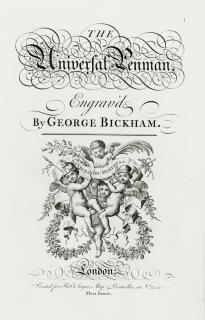The Grolier Club Library has a small but select collection of printed and manuscript works documenting the history of writing, paleography, calligraphy, and the alphabet. A highlight of this collecting area is a group of about a dozen medieval manuscripts, many illuminated or elaborately decorated, dating between the 12th and 16th centuries. (Images and catalogue records for the Library's medieval manuscripts may be accessed via
Digital Scriptorium).

Calligraphy and writing manuals, such as George Bickham's
The Universal Penman (London: Robert Sayer, 175-?), form another important subsection of this collecting area.